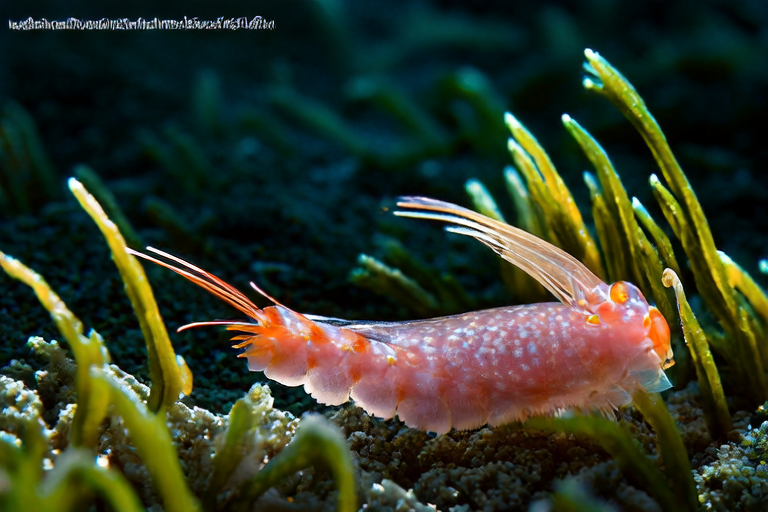A Comprehensive Beginner’s Guide to Coral Shrimp
Welcome to the world of coral shrimp (Coral Shrimp)! These small, colorful creatures are popular among aquarium enthusiasts for their vibrant appearance and relatively easy care requirements. This guide will provide you with all the essential information to get started with your own coral shrimp aquarium, covering everything from basic facts and setup tips to feeding, health monitoring, and social behavior.
1. Basic Information and Types of Coral Shrimp
Coral shrimp, also known as cleaner shrimp or peppermint shrimp, belong to the family Hippolytidae and are native to tropical and subtropical waters around the world. They come in various species, each with unique characteristics:
- Peppermint Shrimp (Lysmata wurdemanni): Known for their distinct red and white striped patterns, these shrimp are often kept as algae-eating helpers in reef tanks.
- Cleaner Shrimp (Lysmata amboinensis):
- This species is famous for its cleaning behavior, removing parasites from other fish.
- Pink Skunk Cleaner Shrimp (Lysmata amboinensis var. amboinensis):
- Similar to the cleaner shrimp but with more pronounced pink coloration.
- Scarlet Skunk Cleaner Shrimp (Lysmata grabhami):
- Distinguished by its bright red and white stripes, this shrimp is highly sought after for both its beauty and beneficial behaviors.
2. Setting Up an Appropriate Aquarium Environment
To ensure your coral shrimp thrive, it’s crucial to create a suitable habitat that mimics their natural environment:
Water Quality Parameters
For optimal health, maintain the following water parameters:
- Temperature: 72-82°F (22-28°C)
- pH: 8.1-8.4
- Salinity: 1.020-1.025 specific gravity
- Ammonia and Nitrite: 0 ppm
- Nitrate: Below 20 ppm
Regular testing using reliable test kits is recommended to monitor these levels.
Filtering System
A good filtration system is vital for maintaining clean water conditions. Consider using a combination of mechanical, biological, and chemical filters. Sponge filters are particularly useful for delicate shrimp because they prevent them from being sucked into strong currents.
Decorative Arrangement
Provide ample hiding spots using rocks, caves, and live rock structures. These shelters not only make the tank more visually appealing but also reduce stress on the shrimp. Avoid decorations with sharp edges that could injure your shrimp.
3. Dietary Requirements and Feeding Tips
While coral shrimp primarily feed on detritus, algae, and leftover food in the aquarium, they can also benefit from supplemental feeding:
- Offer small amounts of high-quality frozen foods like brine shrimp, mysis shrimp, or bloodworms.
- Include algae-based pellets or flakes designed for herbivorous marine life.
- Feed once or twice daily, ensuring there’s no excess food left uneaten overnight.
Overfeeding should be avoided as it can lead to poor water quality.
4. Daily Care and Health Monitoring
Common Diseases Prevention and Treatment
Regularly inspect your shrimp for signs of illness such as lethargy, loss of appetite, discoloration, or abnormal swimming behavior. To prevent diseases:
- Quarantine new additions before introducing them to the main tank.
- Perform regular partial water changes (about 10-20% weekly).
- Ensure proper husbandry practices, including maintaining ideal water conditions.
If you notice any concerning symptoms, consult a veterinarian specializing in aquatic animals for appropriate treatment options.
5. Social Behavior and Interaction with Other Species
Coral shrimp are generally peaceful and non-aggressive towards other tank inhabitants. However, they may compete with smaller fish for food if overfed. They also exhibit interesting cleaning behaviors where they remove external parasites from larger fish. When choosing tankmates, consider species that won’t pose threats to the shrimp through aggression or predation.
6. Special Tips for New Hobbyists
Starting out with coral shrimp requires some preparation:
- Research thoroughly about the specific needs of the species you plan to keep.
- Invest in quality equipment from reputable sources.
- Be patient while establishing stable water conditions and observing your shrimp’s adaptation process.
Remember, every aquarium setup is unique, so adjustments might be necessary based on individual experiences.
